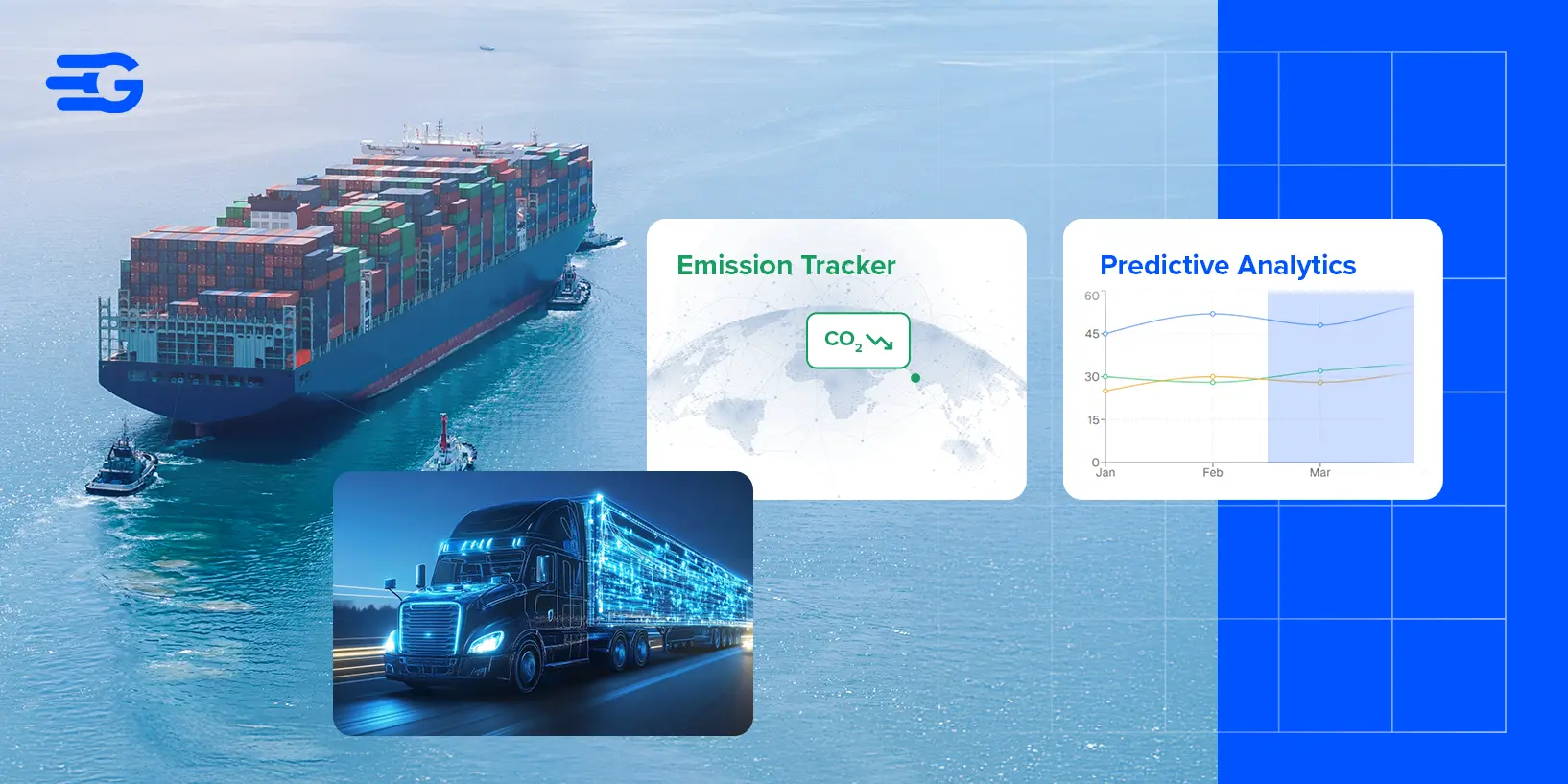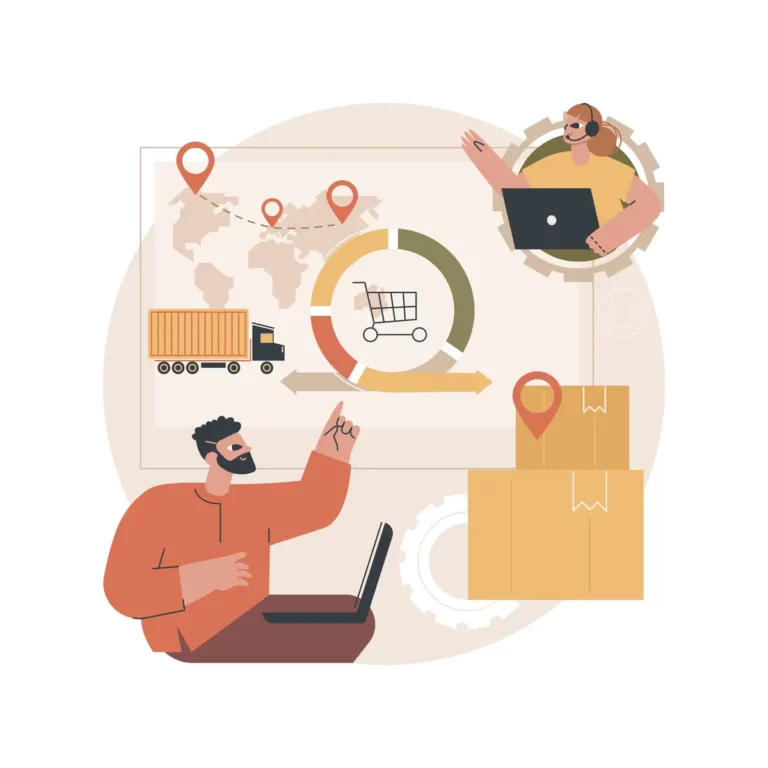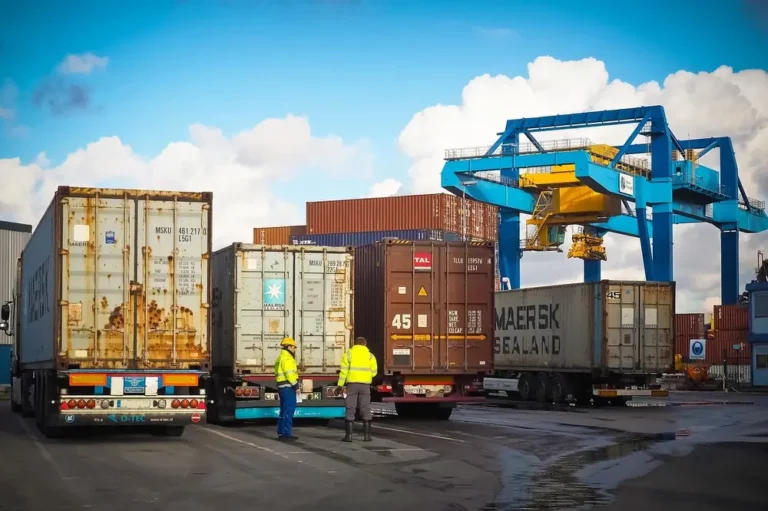Understanding Supply Chain Innovation & Key Advancements
Table of Contents
Supply chains aren’t what they used to be. Simple logistics and manual tracking are long gone. Today, businesses are leveraging cutting-edge innovations to create faster, smarter, and more resilient supply chains. From AI-driven forecasting to blockchain-powered transparency, innovation is changing the game.
But what does supply chain innovation really mean, and why does it matter? Let’s break it down.
What is Supply Chain Innovation?
Supply chain innovation is the integration of new technologies, strategies, and processes to enhance efficiency, reduce costs, and improve overall logistics operations. This could mean using IoT sensors for real-time tracking, deploying AI for demand forecasting, or implementing blockchain for enhanced security.
Recent global disruptions, such as the Red Sea shipping crisis, have highlighted the importance of supply chain resilience. According to recent data, freight rates spiked by over 200% due to rerouted shipments around Africa, increasing costs and lead times.
Companies leveraging AI-powered predictive analytics and real-time shipment tracking were able to mitigate delays and optimize alternative routes, showcasing the power of innovation.
Companies like Tesla, Amazon, and Unilever are already leveraging innovation in supply chains to stay ahead. They use robotics for warehouse automation, machine learning for demand prediction, and digital twins to simulate supply chain scenarios before making real-world changes.
Benefits of an Innovative Supply Chain for Businesses
Investing in supply chain innovation is more than just about keeping up. It’s also about staying ahead. Here’s what businesses gain with an innovative supply chain:
- Faster Deliveries
AI-powered route optimization and predictive analytics help businesses reduce transit times and avoid delays. By analyzing weather patterns, traffic conditions, and demand fluctuations, companies like DHL and UPS ensure shipments arrive on time, keeping customers satisfied and operations running smoothly. - Cost Savings
Automated warehouses reduce labor costs and improve efficiency, while AI-driven insights help businesses eliminate unnecessary expenses. Walmart’s data-driven inventory management prevents overstocking and understocking, cutting storage costs and improving cash flow. - Greater Transparency
Blockchain technology creates a single source of truth, ensuring real-time visibility into shipments, supplier transactions, and inventory levels. Companies using blockchain-powered solutions, like Maersk and IBM’s TradeLens, experience fewer disputes, reduced paperwork, and improved trust and collaboration among supply chain partners. - Sustainability
Businesses are adopting green supply chain practices by tracking emissions, optimizing routes, and using electric or fuel-efficient vehicles. Tools like GoComet’s Carbon Emission Tracker help companies monitor their environmental impact and meet sustainability goals. Reducing waste and emissions isn’t just good for the planet—it’s good for business. - Better Risk Management
AI-driven risk detection systems analyze vast amounts of data to predict potential disruptions, from port congestion to geopolitical issues. Companies like Unilever and Nestlé use AI to monitor supplier risks and ensure business continuity, preventing costly supply chain failures before they happen.
Businesses that embrace supply chain innovation gain a competitive edge by cutting costs, improving speed, and reducing risks. In today’s fast-paced market, staying ahead means staying smart.
Top 10 Groundbreaking and Innovative Supply Chain Technologies Transforming Industries
Supply chains are undergoing a tech revolution. Here are the top 10 innovations making waves:
- Artificial Intelligence (AI) & Machine Learning
AI-powered predictive analytics helps businesses anticipate demand spikes, prevent stockouts, and optimize inventory levels. Machine learning algorithms analyze vast amounts of data, identifying patterns that humans might miss. Retail giants like Walmart use AI to predict purchasing trends, reduce waste, and improve availability. - Blockchain Technology
Blockchain creates tamper-proof records, ensuring transparency in transactions, reducing fraud, and improving trust across the supply chain. Companies like IBM and Maersk use blockchain-powered platforms to track cargo in real time, eliminating paperwork delays and improving security. - Internet of Things (IoT)
IoT devices, like GPS-enabled sensors, provide real-time data on shipments, monitoring temperature, humidity, and location. This is especially critical in industries like pharmaceuticals and food logistics, where maintaining cold-chain integrity is crucial to preventing spoilage and compliance failures. - Robotics & Automation
Warehouses are integrating autonomous robots to pick, pack, and move goods, reducing human error and speeding up order fulfillment. Amazon’s robotic fulfillment centers have cut processing times by 50%, improving efficiency and reducing labor costs. - Digital Twins
A digital twin is a virtual replica of a supply chain, allowing businesses to test different scenarios before implementing changes. This helps companies identify bottlenecks, optimize warehouse layouts, and improve logistics strategies. Siemens and Unilever use digital twins to simulate disruptions and find the best solutions in real time. - Cloud-Based Supply Chain Platforms
Cloud solutions eliminate data silos, enabling real-time collaboration between suppliers, manufacturers, and logistics providers. GoComet’s AI-powered supply chain visibility platform helps businesses track shipments, automate procurement, and optimize freight costs, all through a single interface. - Predictive Analytics
Predictive analytics leverage historical data and AI-driven insights to forecast potential risks, such as port congestion, weather disruptions, or demand fluctuations. UPS uses predictive modeling to optimize delivery routes, saving millions in fuel costs and improving on-time deliveries. - 3D Printing
3D printing reduces reliance on overseas manufacturing by enabling localized, on-demand production. This minimizes lead times, lowers transportation costs, and improves responsiveness to sudden demand shifts. Companies like Boeing and Adidas use 3D printing for aircraft parts and footwear prototypes, cutting production timelines significantly. - Autonomous Vehicles & Drones
Self-driving trucks and drones are making last-mile deliveries faster and more cost-efficient. FedEx and Amazon are testing drone deliveries for lightweight shipments, while Tesla’s autonomous trucking aims to reduce fuel costs and driver shortages. - Sustainable Logistics Solutions
Green logistics is no longer optional. Companies are adopting electric trucks, AI-driven route optimization, and carbon tracking tools to reduce emissions. GoComet’s Carbon Emission Tracker helps businesses monitor and cut their supply chain carbon footprint, aligning with global sustainability goals.
These innovations aren’t just trends. They’re transforming how businesses reduce costs, improve efficiency, and stay competitive in an increasingly complex global market. Companies that embrace these technologies will lead the future of logistics.
How Supply Chain Innovation is Shaping the Future of Global Business
Supply chain innovation is no longer a luxury, it’s a necessity. With global disruptions like the Red Sea crisis, businesses are realizing that agility and resilience are key. The shipping delays in early 2024 led to a 40% increase in lead times for some industries, proving that companies without adaptive strategies struggled the most.
“At GoComet, our mission is to redefine supply chain operations through transparency, collaboration, and advanced analytics. These innovations are transformative solutions for logistics management,” said Chitransh Sahai, Co-founder of GoComet, during the sixth edition of GoComet’s Odessey in Singapore. “Tools like our Carbon Emission Tracker empower businesses to optimize logistics while driving sustainable practices.” He added, highlighting the importance of supply chain innovations.
By embracing these advancements, companies can build stronger, more resilient logistics networks that adapt to disruptions and drive efficiency.
Companies investing in AI-driven analytics, automated logistics, and cloud-based platforms are future-proofing their supply chains.
The impact?
Faster deliveries, lower costs, and enhanced customer satisfaction.
Plus, with sustainability becoming a top priority, businesses adopting green and ethical supply chains will lead the market.
See how supply chain technology is driving change.
Conclusion
The future of supply chains is here, and it’s smarter, faster, and more sustainable than ever. Companies that embrace supply chain innovation will gain a competitive edge, while those that resist will struggle to keep up.
Want to stay ahead?
Keep an eye on emerging technologies, AI-driven insights, and automation.
For more insights, check out our blogs on AI in supply chain and predictive analytics.
FAQs
How Does Innovation in the Supply Chain Create Value?
Innovation in the supply chain creates value by improving efficiency, transparency, and responsiveness. Businesses can reduce waste, cut costs, and enhance customer satisfaction by leveraging AI, automation, and real-time data analytics. It also strengthens risk management by identifying potential disruptions before they become costly problems.
Can Small Businesses Benefit from Supply Chain Innovation?
Absolutely! Small businesses can leverage affordable cloud-based solutions, AI-driven insights, and digital platforms to streamline operations. Technologies like predictive analytics and real-time tracking are now more accessible than ever, helping small businesses compete with industry giants by improving efficiency and reducing costs.






